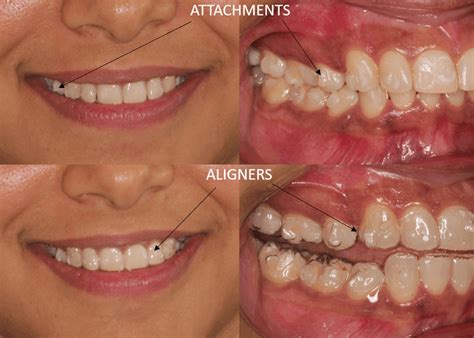Invisalign: Aligner Change Frequency and Attachments – Your Guide to a Straight Smile
Invisalign, the clear aligner system, has revolutionized orthodontic treatment, offering a discreet and comfortable alternative to traditional metal braces. A key aspect of the Invisalign process involves the regular changing of aligners and the occasional use of attachments. Understanding the frequency of aligner changes and the purpose of attachments is crucial for a successful treatment journey. This comprehensive guide will delve into these essential components, answering your burning questions and providing valuable insights.
How Often Do You Change Invisalign Aligners?
Typically, Invisalign aligners are changed every one to two weeks. Your orthodontist will create a personalized treatment plan outlining the precise schedule. This schedule is determined by several factors, including:
- Severity of misalignment: More complex cases may require more frequent aligner changes.
- Individual tooth movement: The speed at which your teeth move will influence the timing of aligner changes.
- Patient compliance: Consistent wear is crucial for effective treatment. If you don't wear your aligners as directed, your treatment timeline might be extended.
Missing an aligner change can disrupt the treatment process. It's essential to follow your orthodontist's instructions precisely. If you experience any issues or have questions, contacting your orthodontist promptly is always recommended.
What are Invisalign Attachments, and Why are They Used?
Invisalign attachments are small, tooth-colored composite resin bumps bonded to the surface of your teeth. They act as handles for the aligners, providing extra control over tooth movement. Not everyone needs attachments; their use depends on the complexity of your case.
What is the Purpose of Invisalign Attachments?
Attachments play a vital role in achieving the desired results:
- Precise tooth movement: They allow the aligners to exert the necessary force to precisely shift teeth into their correct positions. Without attachments, some movements may be impossible or significantly slower.
- Controlling rotation: Attachments help control the rotation of teeth, ensuring they are aligned perfectly.
- Improving efficiency: By facilitating controlled movement, attachments often contribute to a shorter overall treatment time.
How Long Do Invisalign Attachments Stay On?
Attachments remain on your teeth throughout your treatment. They are removed only once your treatment is complete. They are carefully bonded and designed to be durable and resistant to chipping or breakage.
How Long Does Invisalign Treatment Typically Take?
The overall duration of Invisalign treatment varies greatly depending on several factors. It's important to consult your orthodontist for a personalized estimate, but generally, treatment can range from 6 to 18 months or longer, depending on the complexity of your case. The aligner change frequency, as mentioned, directly impacts the treatment timeline.
What Happens if I Lose an Aligner or an Attachment Breaks?
Losing an aligner or having an attachment break is a possibility. Contact your orthodontist immediately if this happens. They can advise on the next steps, which might involve replacing the aligner or repairing/replacing the attachment. Continuing with a damaged aligner or missing attachment could affect the results.
Can I Clean My Teeth With Invisalign Aligners and Attachments?
Maintaining good oral hygiene is paramount during Invisalign treatment. It's essential to brush and floss your teeth thoroughly before putting your aligners back on. Cleaning your aligners themselves is also crucial; refer to your orthodontist’s guidelines on recommended cleaning methods. Regular cleaning prevents plaque buildup around attachments and maintains healthy gums and teeth throughout your treatment.
Does the Pain Level Change With Aligner Changes?
Many patients experience mild discomfort or pressure when changing aligners. This is usually temporary and manageable with over-the-counter pain relievers. The level of discomfort can vary depending on the individual and the complexity of the tooth movement involved. As your teeth adjust, this pressure generally subsides.
This detailed overview should provide a clearer understanding of aligner change frequency and the role of attachments in Invisalign treatment. Remember, consistent wear, regular checkups with your orthodontist, and diligent oral hygiene are key components to achieving a successful outcome.

